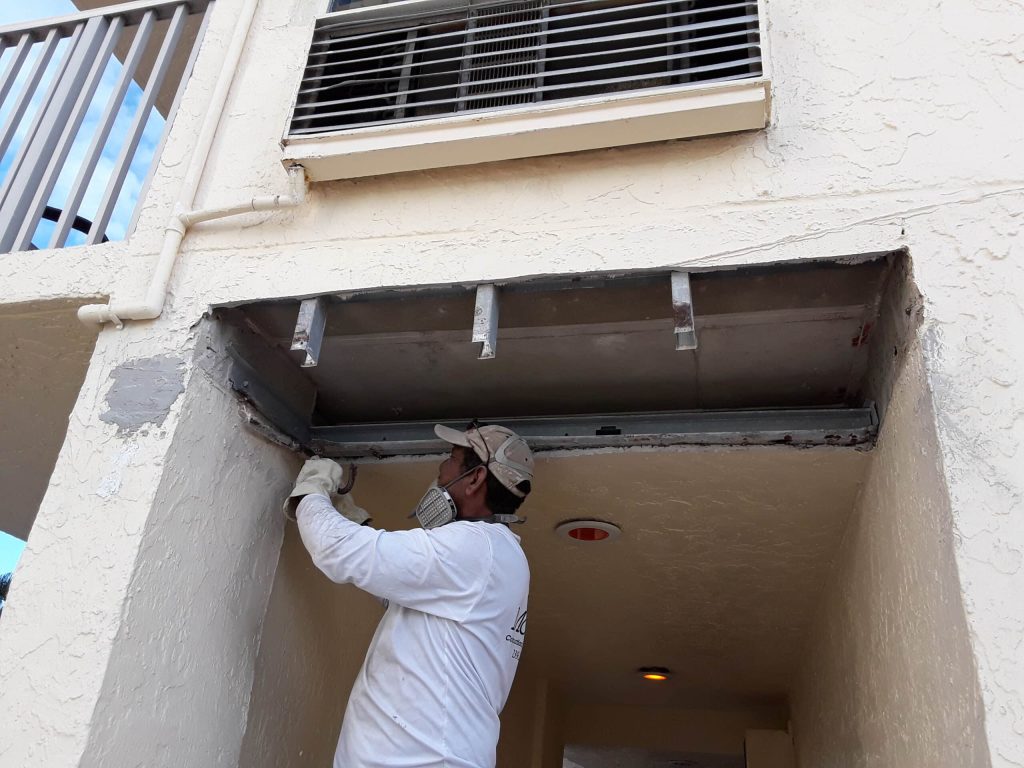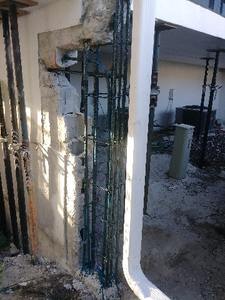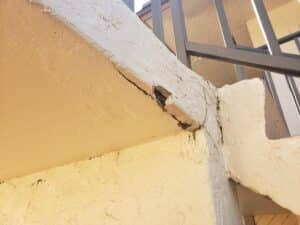When it comes to the integrity of concrete structures, understanding the root causes of damage and implementing the right repair solutions are pivotal. We often encounter various types of deterioration that can affect the stability, look, and lifespan of concrete. Addressing these issues promptly and effectively is not just about maintaining appearances; it’s about safeguarding the structural integrity that is critical to any building’s longevity. We specialize in diagnosing and fixing concrete problems with precision, ensuring that these structures can stand the test of time.
Concrete damage can stem from a multitude of sources including environmental factors, chemical reactions, physical stress, and improper installation. Our expertise allows us to identify specific issues quickly and recommend the best corrective actions. By employing advanced repair techniques and choosing suitable materials, we restore concrete structures to their original strength and functionality. This proactive approach not only repairs existing damage but also helps in preventing future deterioration.
Understanding the Basics of Concrete Damage
In our experience, understanding the fundamentals of concrete damage is crucial for any successful restoration project. Concrete, while durable and versatile, is susceptible to a range of damages that can compromise its structural integrity and aesthetic value. Some of the most common forms of concrete damage include cracking, spalling, and delamination. These issues often result from environmental stressors such as temperature fluctuations, moisture, chemical exposure, or physical impacts. Cracks may appear small and harmless initially, but without prompt and proper treatment, they can expand and lead to more severe problems, including structural failures.
Additionally, water is a major enemy of concrete. It can penetrate through cracks and pores, leading to corrosion of reinforcing steel, which further accelerates the degradation process. Understanding these damage mechanisms helps us tailor our approach to each project, ensuring that we address the root cause of the problem and not just the symptoms. This knowledge is not only vital for performing repairs but also for advising clients on the best practices to maintain their concrete structures and prevent future damage.
Key Techniques for Effective Concrete Repairs
When it comes to concrete repairs, the techniques we employ are devised to be as effective and enduring as possible. The initial step in our repair process involves a thorough assessment of the damage. This is followed by the selection of an appropriate repair method, which could range from simple sealing to complete replacement, depending on the extent of the damage and the specific requirements of the project. Here are a few techniques we often use:
1. Sealing Cracks and Joints: Using high-quality sealants helps in preventing water ingress and other contaminants. Sealants act as a barrier, protecting the concrete from moisture and reducing the risk of corrosion.
2. Concrete Patching: For areas where concrete has chipped away or where voids have developed, patching is a common repair technique. We use a compatible patching compound that adheres well to the existing concrete and restores its original strength and functionality.
3. Epoxy Injection: For repairing cracks that do not compromise structural integrity, epoxy injections are ideal. The epoxy adhesive helps in bonding the cracked parts, restoring the original strength of the concrete.
4. Reinforcement with Fiber Wrapping: In cases where the structural stability of concrete is a concern, we reinforce it with fiber wrapping. This technique involves wrapping carbon or glass fibers around the damaged area, significantly enhancing its strength and durability.
These techniques, combined with our extensive experience and careful planning, ensure that the repairs are not only effective but also lasting, preserving the lifecycle of the concrete structures we work on.
Choosing the Right Materials for Concrete Restoration
Selecting the correct materials for concrete restoration is paramount to ensuring repairs last and function effectively. When we approach a restoration project, our choice of materials is dictated by the type of damage, the environmental conditions, and the specific performance requirements of the structure. Typically, we look for materials that not only match the original concrete in terms of appearance and mechanical properties but also offer enhanced durability. For instance, if the concrete has suffered from alkali-silica reactions, we opt for materials with a low alkali content to prevent further degradation. Moreover, the introduction of polymer-modified mortars has been a game-changer in our restoration practices. These mortars significantly improve adhesion, water resistance, and strength, allowing us to achieve more durable and reliable repairs.
Additionally, we often use silica fume or fly ash in our concrete mixtures to enhance their performance. These materials help in reducing the permeability of concrete, which in turn increases its resistance to aggressive chemicals often found in urban environments. By carefully selecting the right materials, we not only restore the structural integrity of the concrete but also significantly extend its service life.
Preventive Measures to Extend Concrete Durability
Implementing preventive measures is key to extending the durability of concrete structures. Through our years of expertise, we have developed a robust preventive maintenance strategy that effectively mitigates the risk of premature deterioration. The cornerstone of our strategy is a regular maintenance schedule that includes inspections and minor repairs as needed. This proactive approach allows us to identify and address potential problems before they escalate into more serious issues.
One fundamental part of our preventive measures includes the application of high-quality sealants and waterproofing products. These products create a protective barrier against moisture, which is one of the primary culprits in concrete damage. We also recommend protective coatings that not only enhance the aesthetics of concrete but also provide additional protection against environmental factors like UV rays and pollution. For high traffic areas, we advise the use of abrasion-resistant finishes to prevent physical wear and tear.
Finally, educating our clients on the best practices for concrete care forms a significant part of our preventive measures. By understanding the factors that affect concrete longevity, property managers are better equipped to maintain their buildings’ structural health. In providing these comprehensive solutions, we aim to extend the durability of concrete structures, ensuring they remain safe and robust for years to come.
Conclusion
At McLeod’s Contracting Solutions, we are committed to maintaining and restoring the integrity of your building’s concrete infrastructure using the most effective, efficient, and sustainable methods available. If you’re facing challenges with your concrete structures or seeking advice on how to best maintain them, contact us today to learn more about our expert concrete restoration and repair services. Let us help you safeguard your investment and ensure your property remains in top condition for the long haul.







